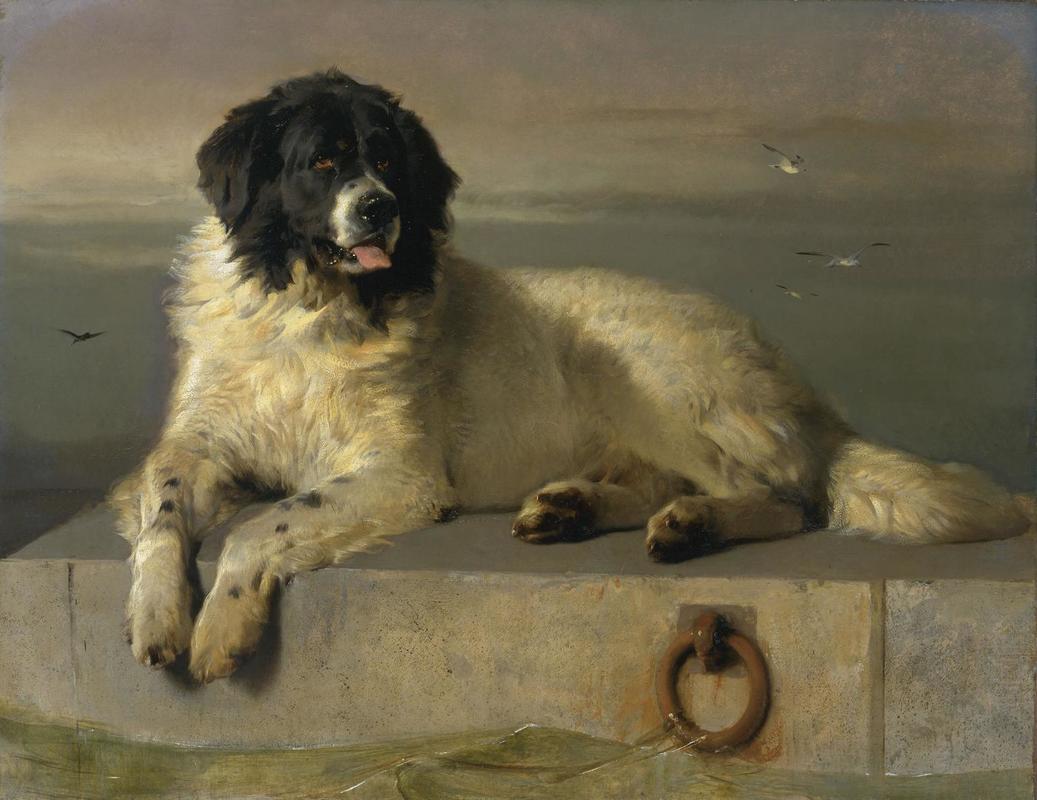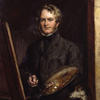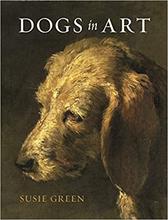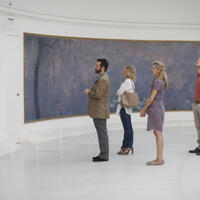Comments (3)

A distinguished Member of the Humane Society
Edwin Henry Landseer was a brilliant painter who was best known for his animal pieces. The piece was made in 1831, near the end of the Romanticism Period. His work didn’t quite fit the characteristics of the time, but his style was quite similar.
- Line
- The ledge the dog is laying on is formed by a solid thick line.
- Also, the forelegs and the tail create unseen lines directing the eyes back to the head
- Shape
- The piece of Art is on a rectangular canvas, and the figure is slightly left-centered. It is actually quite large, being 44 in by 56.4 in.
- There is also a triangle formed by the head, the forelegs and the hind-legs/tail. This is a common and really helps viewers to know where and how to look at a painting.
- Form
- Without being 3D, the painting portrays a dog that looks like its front is truly closer to the audience. However, it is still illusion.
- Value
- The value is darkest on the head and in the background, creating depth to the picture. The lights create the illusion of shadows even though the picture is 2D.
- Composition
- The painting would feel unbalanced if the metal ring was not there. The head, being both black and off centered, creates a pull to the left side, but the ring evens it out.
- Texture
- There aren’t any visual brushstrokes in the picture, but the dog seems to have a fluffy/hairy texture.
- Color
- There is a focus on black, white and yellow. The contrast between the dark head and the yellow/white body really draws your eyes to the head. The background grey also helps the figure stand out.
- Space
- The artist used the space well, the Dog isn’t too big to be overwhelming, but is also not to small to seem insignificant and wasteful. The negative space is not completely negative because the Seagulls in the background add depth and color.
The picture, overall, is balanced really well. The details really emphasize the texture and animate the character.

Within this marvelous painting, we see so many intricate details that really bring the art to life. The colors bring out the kind of dog it's portraying. The immaculate details bring out so much detail that it almost looks like a photograph. Not only that, but the background provides the picture with a mysterious feeling. There are many cool colors involved with it. For example, the clouds behind look gloomy which also makes it seem like a storm is about to start up. The water near the paws of the dog also seems murky and green, giving it a realistic visual to it. Overall, it seems that the background seems boring and dull, but then you look at the dog, and it seems content sitting on the ledge. The dog is painted against a threatening dull sky, in order to highlight the dog himself with the darkened markings on his head standing out.
The landscape format seems to be proportional, especially with the added birds on one side of the portrait and the head of the dog on the other. Moving on, you also can see some texture, looking at the fur. The strokes involved here allows the fur to appear fuzzy and soft, almost like you could reach out and pet it. Furthermore, the brushstrokes are bold and smooth throughout the portrait. There is definitely enough detail in the entire artwork, especially with how life-like it all really looks. It also includes a naturalistic look to it as well, with the dog as the center of attention, along with it sitting on a ledge by what appears to either be the ocean or a body of water.
















I really like this painting because I personally love dogs but also you are able to see how relaxed the dog is at the moment because he was able to find somewhere dry to lay as water is surrounding him and the sky behind him darkens.